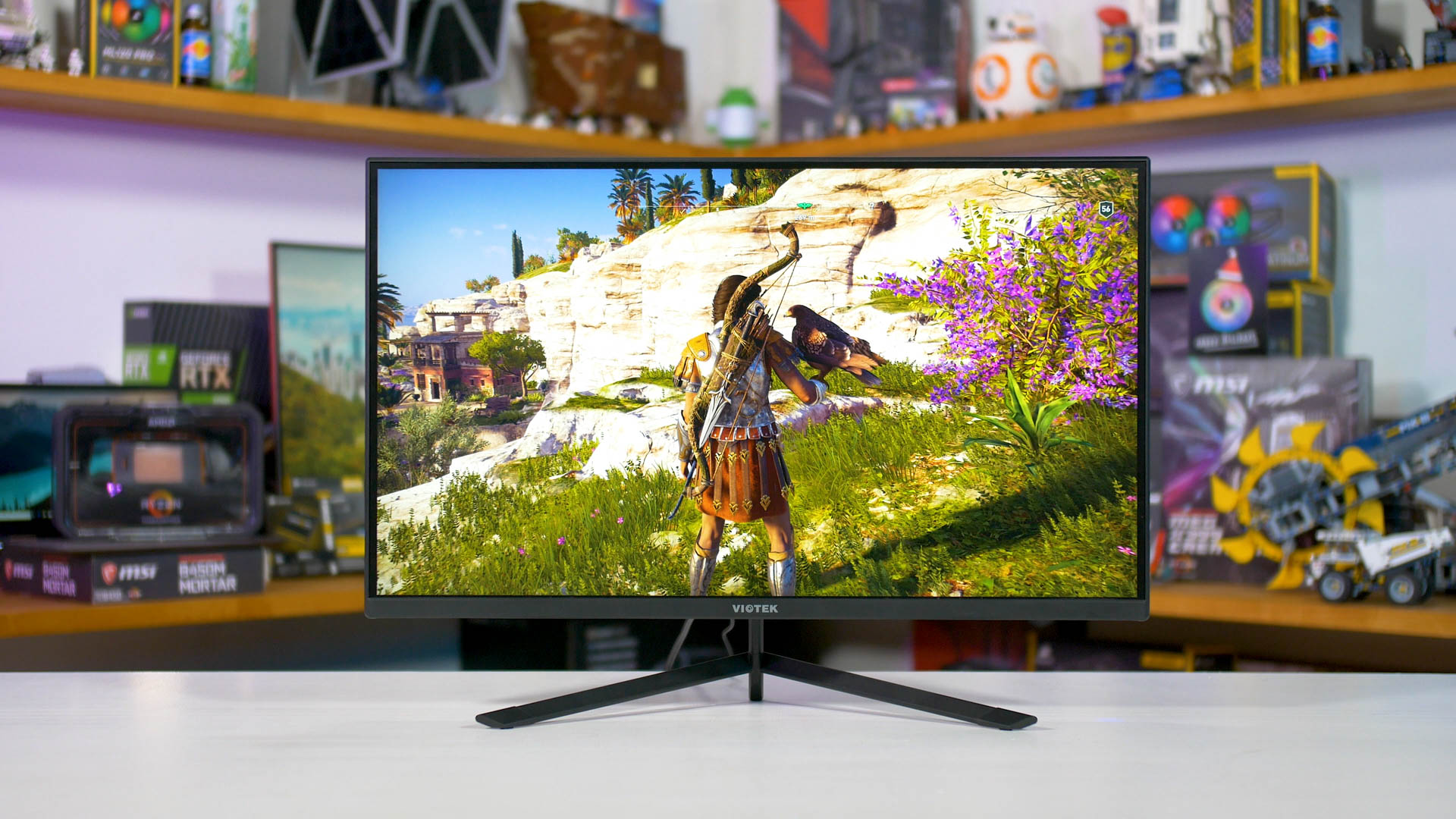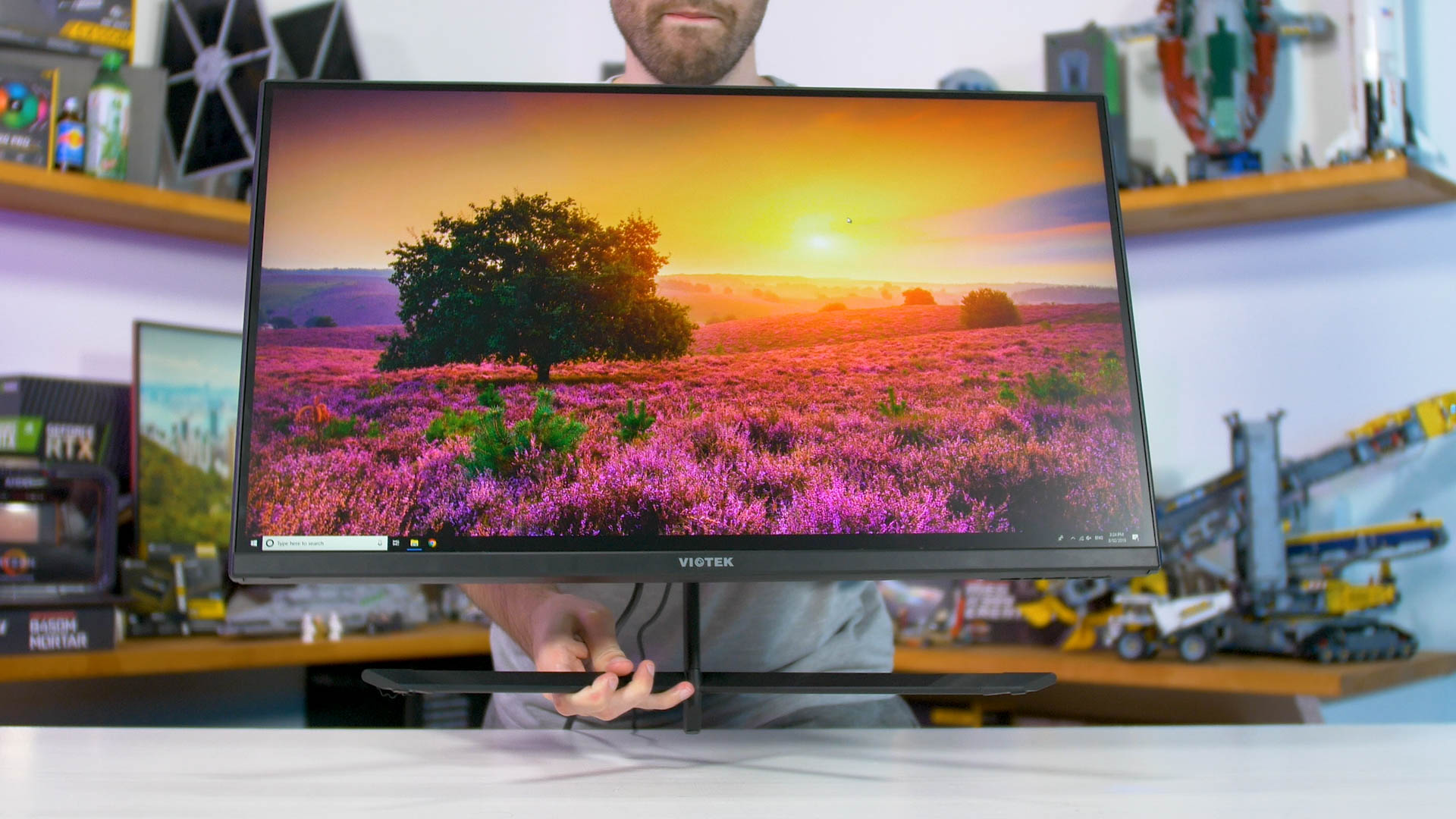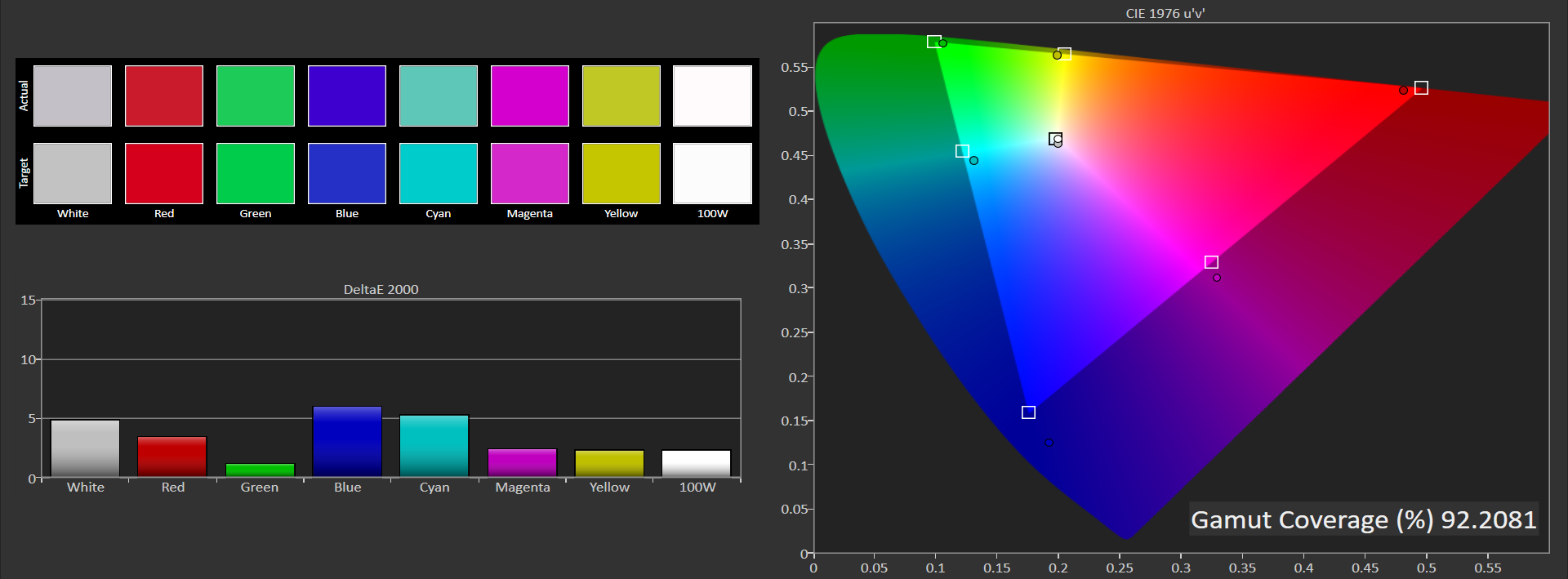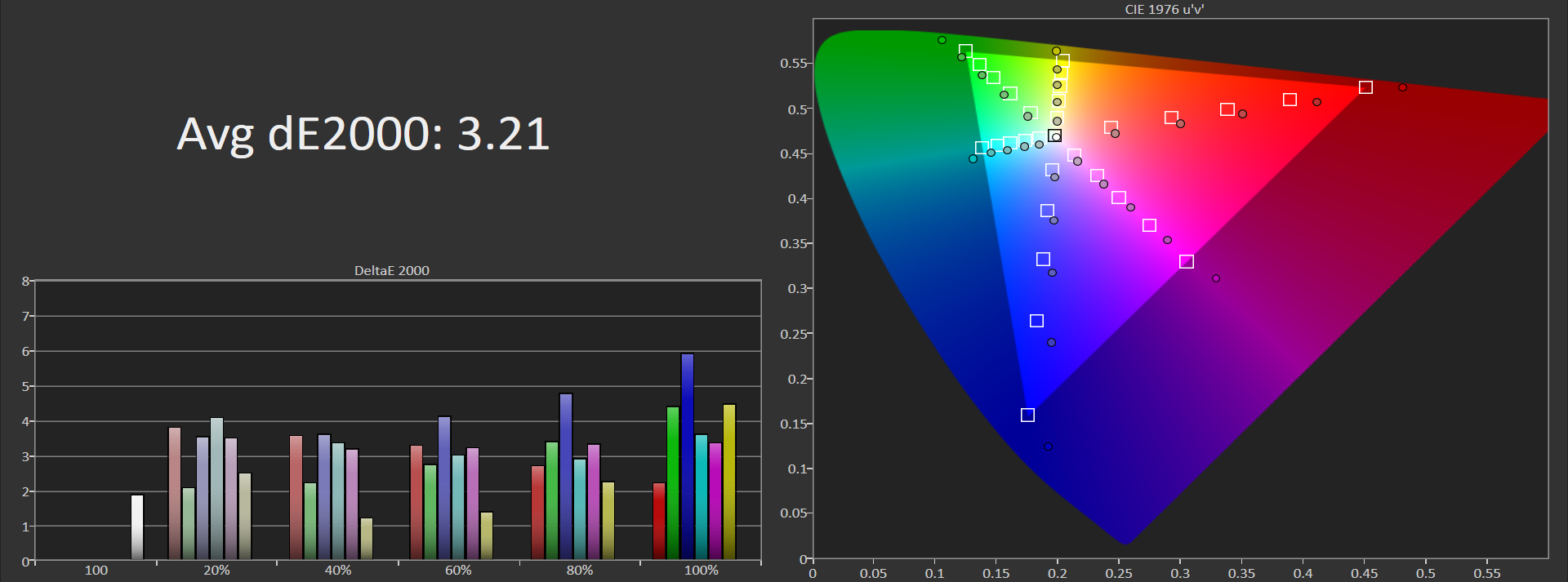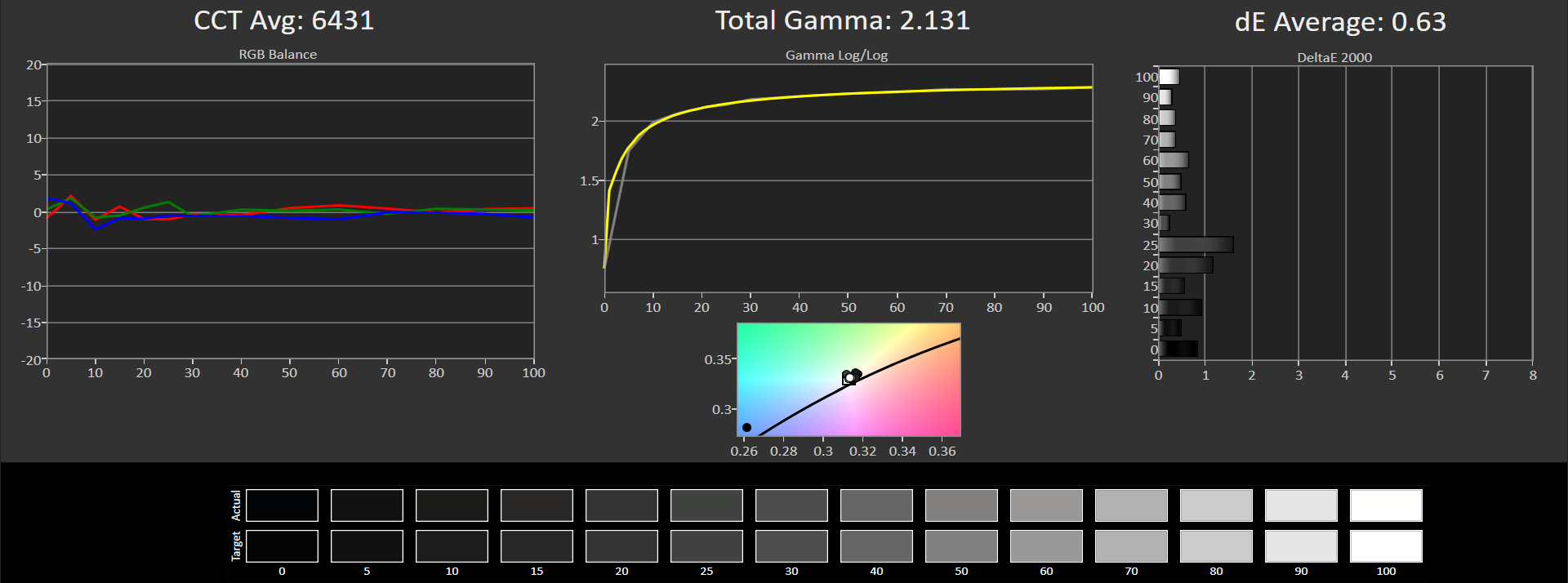Following up to our best value FreeSync monitors feature, we though this review would be ideal. Today we're looking at the Viotek GFT27DB which is a brand new display release, sporting a new TN panel (ideal for gamers) that promises a lot on paper. Having reviewed several Viotek displays in the last year, we've been consistently impressed with the value proposition, so we are hoping nothing changes here in that respect.
The Viotek GFT27DB aims to be a flat TN version of their curved VA GN27D, so specs are very similar. We're looking at a 27-inch panel, 1440p resolution, and 144 Hz maximum refresh rate. This monitor supports FreeSync with low framerate compensation, and we can confirm it works perfectly with both AMD and Nvidia GPUs.
With this new monitor opting for a TN panel instead of a VA, gamers are treated to a flat display which we personally prefer at this size. But there are other key benefits. This is not your standard, crappy, entry-level TN - instead this is what appears to be a brand new high-end TN from AU Optronics. It's actually wide gamut, Viotek claims 115% sRGB, which is very rare for a TN, plus it's native 8-bit, another rarity for TN panels.
The goal here is to mitigate some of the known color issues with TN displays, while still providing all the speed benefits, such as fast response times. It's an interesting direction to take TN panels, but one that does make sense because the two technologies known for their colors - IPS and VA - are struggling to hit the response times of a good TN. So if a TN can get to the same colors as an IPS or VA... it brings it back into calculations for a lot of buyers. And we'll talk extensively about how this new panel performs in a moment.
But before that, let's talk about the Viotek GFT27DB in particular. It comes in at the same price as the GN27D, so $330, which leaves buyers with a choice between TN and VA. The GN27D is currently the cheapest monitor in its class, but the GFT27DB isn't quite the cheapest 27-inch 1440p 144Hz TN. That crown goes to Pixio with the PX276, however the Pixio option is using an older TN that isn't wide gamut, so Viotek is offering potentially better color quality for a mere $20 extra.
The design, like most of Viotek's monitors, is simple. Fairly cheap but minimalist plastic is used for the main monitor section, complete with a matte display coating that's slightly grainy, but not unusually so for a TN. Bezels are slim, the three pronged stand is built from metal and looks pretty good, and aside from a very basic red light on the back, there's not a lot of gamer style which we very much appreciate.
As with all simple designs, there are some limitations. The stand only supports tilt adjustment, if you need height adjust you'll either have to purchase a VESA mount, or opt for another monitor entirely. The stand is also quite wobbly, more so than a typical monitor of this size. While the general build quality is fine if a bit unamazing, the stand's instability makes it feel a bit cheap. That said, it's not going to move around on your desk once you put it in place.
For ports, all standard stuff: one DisplayPort 1.4 and a generous three HDMI ports including one HDMI 2.0 port, plus an audio output jack. There are a pair of built in 2W speakers, but they are complete rubbish in case you were wondering. Seriously they are so bad we don't know why Viotek included them.
The other complaint we have in regards to the design is Viotek's continual use of four buttons along the bottom edge to control the on screen display, rather than a much easier directional toggle. Combined with the wobble in the stand, it's pretty hard to navigate the OSD, where you'll find features like cheat crosshairs, picture in picture and color controls. And it's worth mentioning that FreeSync is disabled by default in the settings, so make sure you turn that on.
As for the panel itself, our main concern going into this review was viewing angles, as it continues to be the biggest issue for TN monitors, particularly at the higher-end of the TN scale.
We've gotta say, this is one of the better TN displays we've seen in terms of viewing angles, especially horizontally where there is some contrast shift but it isn't too bad. However vertically there's still a significant change in contrast from viewing at off angles, you will still want to view it dead on and make sure you have it tilted correctly to get the best experience. So while it's good for a TN, viewing angles are still several steps behind a VA and especially an IPS panel.

The other area where TNs tend to suffer is contrast ratio, though the GFT27DB is on the upper end of the TN scale with this new AU Optronics panel. Native contrast ratio is a touch under 1000:1, sitting around the 970:1 mark, which is as good as it gets for a TN. This is in line with IPS panels but does fall well behind a typical VA, where you can expect more than double the contrast ratio for something like the GN27D.

Brightness, it all checks out. This monitor significantly exceeds Viotek's claims. They list a 220 nit peak brightness but it performs well above that; we recorded a maximum brightness of slightly under 350 nits, which is pretty bright and a good result for a TN.

Response times are clearly the big selling point of TN monitors; you buy one because you want it to be fast, and fast for gaming in particular. Viotek claims a 1ms response time with overdrive and a 3ms "standard" response, which we have to say holds up pretty well with what we found during testing.
The optimal overdrive setting here is the maximum 'High' mode, which does have a small amount of overshoot with some transitions but it was within our tolerances and shouldn't matter all that much. With this mode enabled, the average grey to grey transition was 3.38ms, a typically fast result for a TN, pitting it well ahead of VA alternatives. With the absolute best VAs sitting above 5ms on average, with 8ms a more realistic figure, this TN is noticeably clearer with less blur and less ghosting.
The general behaviour of this TN isn't anything unusual either. Rise times are much slower than fall times, with an average rise of 4.91ms that's impacted by a relatively slow black to white transition. Fall times are lightening quick though, at under 2ms, with some transitions hitting that 1ms claimed figure. In general the panel is much faster than the needed 6.94ms for refreshing at 144 Hz, so you're getting the full benefit of the high refresh here, combined with good clarity.

Input lag is also very good, we recorded around 4ms of latency which when combined with the fast transition time makes the GFT27DB a very fast monitor. You'd expect this from a gaming-focused TN monitor and Viotek has delivered.
In terms of color performance, this TN really punches above its weight in a few areas. We're getting a comfortable 100% sRGB coverage but it's the 92% DCI-P3 coverage that really impressed me, that's not quite at the level we'd expect from a wide gamut professional monitor but it's a few percentage points higher than many of the wider gamut VA panels we've tested recently from Samsung. Those panels typically clock in between 85 and 90 percent DCI-P3 so for this TN to beat that is certainly quite impressive, as most TNs are not wide gamut whatsoever. Native 8-bit support is also great to see considering many TNs are 6-bit + FRC.
Unfortunately Viotek leaves this wide gamut support unclamped, which means that without calibration, the display is oversaturated when viewing sRGB content. And sRGB content is 99% of what you'll view outside of professional workflows. If you love or don't mind oversaturation and extra vibrant colors, that's great, this panel will look amazing, but if you're after accuracy unfortunately out of the box the GFT27DB won't deliver.
Default Performance
What we'd really like to see and what we recommend for all wide gamut monitors, is a simple switch in the on-screen display that toggles between an sRGB and a wide gamut state. Viotek doesn't provide this, and the result is a saturation deltaE average of 3.18 along with a ColorChecker deltaE of 3.43. Greyscale results are a little off as well with our unit having a slight red tint out of the box along with a deltaE average of 3.60, although gamma is good.
If you're wondering about DCI-P3 accuracy Viotek doesn't really deliver here either, with deltaEs between 2.5 and 4.0 for the most part. Again it seems like the panel is not calibrated at all at the factory which is typical for a Viotek display and many gaming monitors in general. Were this for professional work, we'd expect better results.
Calibrated Performance
Without the ability to clamp the gamut there's not a whole lot you can do in the on-screen display to improve performance, aside from some minor tweaks to correct the white point. To get accurate results you really need to perform a full calibration, which as always we did with the help of our good friend, SpectraCAL's CALMAN 5. Aside from a couple of outliers, this calibration led to good results with deltaE averages below 1.0. However, like with a typical calibration of a TN display, its contrast ratio did drop to around 900:1, a minor drop but worth mentioning nonetheless.
Lastly we have uniformity, performance is decent, better than your average VA panel but not perfect. When looking at this chart we'd basically class the uniformity here as two blobs on either side of the panel with a slight dip in the center and around the edges. Unlike a lot of curved VAs though, there's no noticeable vignette effect which is a good thing.
Who Is It For?
The Viotek GFT27DB is an interesting product, especially because it's a rare TN with a wide color gamut. The wide gamut does some of the work: in its default state it will be oversaturated, more so than a typical TN, and in line with today's VAs, which allows for either 92% DCI-P3 coverage for those that want it, or vibrant sRGB if you're into that sort of thing.
But it's the true 8-bit panel and the better than usual viewing angles that contribute a lot as well. It's in all three of these areas - bit depth, viewing angles and gamut - that TNs usually fall behind but AU Optronics and Viotek have focused on improving these and the results have paid off. And this is without impacting response times, which are still as fast as you'd expect for a TN.
This panel looks pretty close to a mid-tier IPS and it's only in viewing angles where an IPS pulls ahead noticeably. For a TN we're genuinely impressed with the image quality. But when you combine the viewing angle issue with a contrast ratio of under 1000:1, you're still not getting a VA-like experience with those beautiful deep blacks. Contrast and viewing angles are very good for a TN, and we think for most people will be perfectly fine, but those who love VAs should stick to that.
The GFT27DB also runs into the standard set of issues with Viotek monitors: the stand has limited adjustability and is a bit wobbly, the on-screen display is hard to control, the display is not calibrated, there's no sRGB mode... and it's not available outside of a small handful of countries. While we do spend some time on calibration as part of the review process, most gaming monitors don't come calibrated, so that's the least important issue. As we often hear complaints in the user comments though, we wish Viotek would expand into the European and Australian markets though.
So who would we recommend this monitor to? It's an easy buy recommendation for those that want a fast gaming monitor. It's 1440p and 144Hz with FreeSync, which we feel is still the sweet spot for PC gaming in 2019, and because it's a TN, ghosting is not an issue. Combined with the best colors we've seen for this type of monitor, it's basically the best gaming TN on the market, so kudos to Viotek for that.
It's a unique monitor in that no other company is using this panel just yet, and we don't feel this is reflected in the pricing either. At $330 it's the same price as Viotek's equivalent curved VA, with both the VA and TN each having strengths and weaknesses. The VA still has superior colors, but the TN is flat and it's faster. Both are fantastic value, so which option is better will depend on what you want out of a display. Just don't immediately dismiss the GFT27DB because it's a TN, it's definitely a lot better than most TN displays of the past.
Shopping Shortcuts:
- Viotek GFT27DB on Amazon
- Viotek GN27D on Amazon
- Viotek GN24C on Amazon
- Viotek GN27C on Amazon
- AOC G2590FX on Amazon
- Acer XF250Q on Amazon
- Acer XF270H on Amazon
- Pixio PX276 on Amazon
- Pixio PX277h on Amazon
- Pixio PX329 on Amazon
- AOC AG322QCX on Amazon
- Acer Predator XB281HK on Amazon
- Acer Predator XB271HK on Amazon
- Acer Nitro XV273K on Amazon
- MSI Optix MAG341CQ on Amazon
